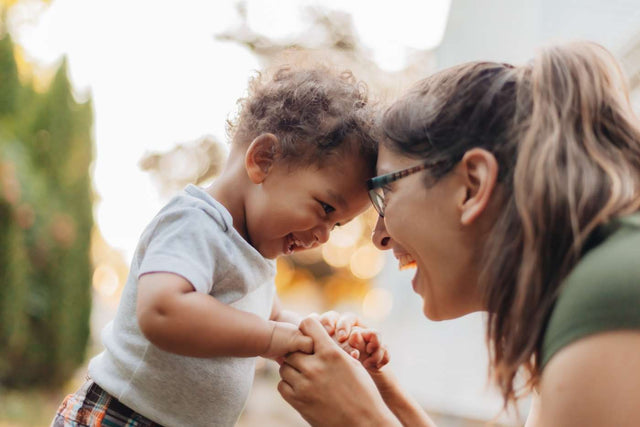How to Help Your Toddler Express Their Feelings

Did you know that emotions make us healthy? In fact, the way in which you react to your child’s expression of emotion will contribute greatly to his health—and happiness—for the rest of his life.
Bottled-up feelings can lead to a profound sense of loneliness (“No one understands”/“No one cares”) or even bursts of hysteria (think drama queen or someone needing anger-management classes). Kids whose words of fear and frustration are repeatedly silenced may grow up emotionally disconnected (like the guy who snarls “I’m NOT angry!”, totally unaware that the veins are popping out of his forehead).
On the other hand, when we “have a good cry” we feel and think better. Venting anger with a good scream or punching a pillow can lower our blood pressure and help us recover, forgive, and move on. Laughter and tears have even been shown to strengthen the immune system and help heal illness.
Children whose feelings are lovingly acknowledged during the toddler years grow up emotionally intact. They know how to ask their friends for help and how to support others in need. They seek out healthy relationships, avoiding bullies and choosing confidantes and life partners who are thoughtful and kind.
How to Help Your Toddler Express Feelings
Young toddlers (12–24 months)
Model for your child how to vent their feelings. For example, when they're mad stomp your feet, clap your hands, and shake your head vigorously, and teach them to say “No!” (“Evelyn says, ‘No, no, no! Mine, mine! Stop now!’”)
Older toddlers (2–4 years old )
When things are calm, have your tot practice different faces: “Show me your happy face…your sad face…your mad face.” Point out pictures in books and say “Look at that sad baby. How do you look when you’re sad?” Cut out magazine pictures of people showing emotions and put them on cardboard cards or in a little “feelings book.” Demonstrate your facial expressions so they can see what you mean: “When I get mad my eyes get small and my mouth gets tight like this [make face].”
Teach your child the words to use when they're upset. Use pictures in the “feelings book” as a starting point. Ask, “How does that boy feel? Why is that girl sad?” Enrich your child’s vocabulary by using different words. For example, for “mad” you might also use: angry, furious, miffed, boiling, red-hot, etc.
Amazingly, the more you practice these simple steps, the sooner your child will start to gain control of their emotional outbursts.